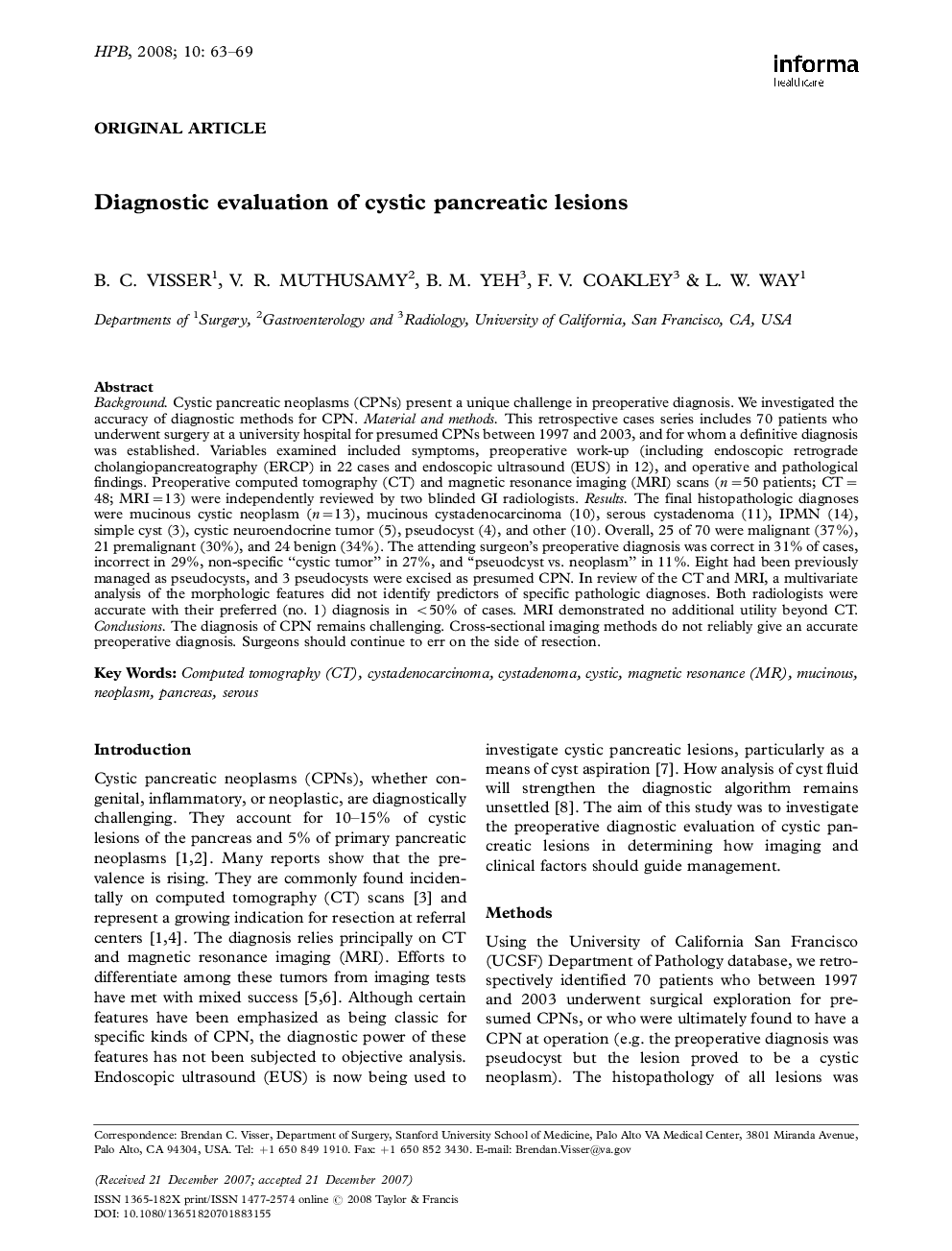| Article ID | Journal | Published Year | Pages | File Type |
|---|---|---|---|---|
| 3270256 | HPB | 2008 | 7 Pages |
Abstract
Background. Cystic pancreatic neoplasms (CPNs) present a unique challenge in preoperative diagnosis. We investigated the accuracy of diagnostic methods for CPN. Material and methods. This retrospective cases series includes 70 patients who underwent surgery at a university hospital for presumed CPNs between 1997 and 2003, and for whom a definitive diagnosis was established. Variables examined included symptoms, preoperative work-up (including endoscopic retrograde cholangiopancreatography (ERCP) in 22 cases and endoscopic ultrasound (EUS) in 12), and operative and pathological findings. Preoperative computed tomography (CT) and magnetic resonance imaging (MRI) scans (n=50 patients; CT=48; MRI=13) were independently reviewed by two blinded GI radiologists. Results. The final histopathologic diagnoses were mucinous cystic neoplasm (n=13), mucinous cystadenocarcinoma (10), serous cystadenoma (11), IPMN (14), simple cyst (3), cystic neuroendocrine tumor (5), pseudocyst (4), and other (10). Overall, 25 of 70 were malignant (37%), 21 premalignant (30%), and 24 benign (34%). The attending surgeon's preoperative diagnosis was correct in 31% of cases, incorrect in 29%, non-specific “cystic tumor” in 27%, and “pseuodcyst vs. neoplasm” in 11%. Eight had been previously managed as pseudocysts, and 3 pseudocysts were excised as presumed CPN. In review of the CT and MRI, a multivariate analysis of the morphologic features did not identify predictors of specific pathologic diagnoses. Both radiologists were accurate with their preferred (no. 1) diagnosis in <50% of cases. MRI demonstrated no additional utility beyond CT. Conclusions. The diagnosis of CPN remains challenging. Cross-sectional imaging methods do not reliably give an accurate preoperative diagnosis. Surgeons should continue to err on the side of resection.
Keywords
Related Topics
Health Sciences
Medicine and Dentistry
Endocrinology, Diabetes and Metabolism
Authors
B.C. Visser, V.R. Muthusamy, B.M. Yeh, F.V. Coakley, L.W. Way,
